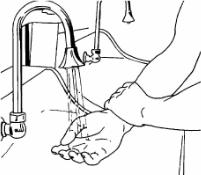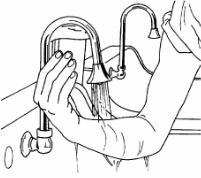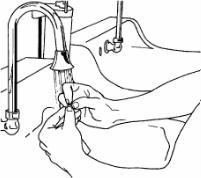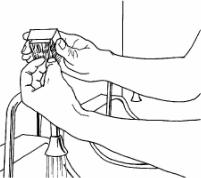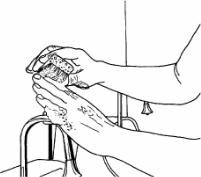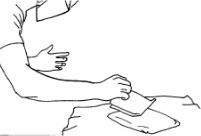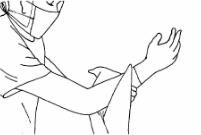|
Section IV: The Surgical Scrub
a. Requirements for Performance of a Complete Scrub. The specialist is to perform a scrub in the following instances:
(1) Before the first case in the morning.
(2) Between cases.
b. Methods. As local policy prescribes, the specialist will scrub by one of the following methods:
(1) Time method. Using a clock or some other timing device to measure brushing time, the length of the scrub varies from one institution to another. This method has been most frequently used in the past.
(2) Brush-stroke method. A prescribed number of brush-strokes, applied lengthwise of the brush or sponge, is used for each surface of the fingers, hands, and arms.
1-15. PRINCIPLES
The specialist should follow certain principles when performing the surgical scrub (see Table 1-1).
|
Table 1-1. Surgical scrub principles. |
|
| Rinsing time: | Is not to be included in the total scrub time if the timed method is to be used. |
| Unsterile objects: | Should not be touched once the scrub procedure has begun. |
| Entire scrub procedure: | Must be repeated if an unsterile object is touched. |
| Same scrub procedure: | Should be utilized for every scrub, whether it is the first or last one of the day. |
| Local policy: | May specify the time lengths and brush strokes for scrub procedures between cases. |
1-16. PROCEDURE
a. Both surgical scrub methods follow an anatomical pattern of scrub. One should think of the fingers, hands, and arms as having four sides or surfaces. If properly executed, both methods are effective and each exposes all surfaces of the hands and forearms to mechanical cleaning and chemical antisepsis.
b. In the following paragraphs, the brush-stroke method is described, using a disposable, prepackaged, pre-sterilized sponge/brush, impregnated with a surgical detergent.
|
|
|||||||||
|
LESSON OBJECTIVES After completing this lesson, you should be able to: 1-1. Select safe, effective procedures and techniques for performing a surgical scrub and donning sterile gown and gloves. 1-2. Assist other members of the "sterile" team in donning gown and gloves. 1-3. Select appropriate procedures for removing gown and gloves between cases. |
|||||||||
|
|||||||||
|
The Brookside Associates Medical Education Division is dedicated to the development and dissemination of medical information that may be useful to medical professionals and those in training to become medical professionals. This website is privately-held and not connected to any governmental agency. The views expressed here are those of the authors, and unless otherwise noted, do not necessarily reflect the views of the Brookside Associates, Ltd., any governmental or private organizations. All writings, discussions, and publications on this website are unclassified.
© 2008 Medical Education Division, Brookside Associates, Ltd. All rights reserved



